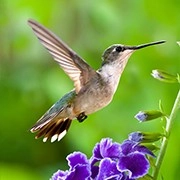Breathless Bold Tunes
Some sounds don’t need to stop to take your breath away—and bagpipes are a perfect example. Their music flows endlessly, filling the air with a voice that’s both bold and emotional.
Today, let’s explore this fascinating instrument together and uncover the story behind its timeless sound.
What exactly is a bagpipe?
Bagpipes are traditional wind instruments known for their continuous sound and rich history. They belong to the reed family, just like clarinets or oboes, but they’re built very differently. A typical bagpipe has four main parts: a blowpipe, a bag, a melody pipe called the chanter, and one or more drone pipes.
The player blows air into the bag through the blowpipe. This bag acts like a lung—it stores the air and provides a steady flow, so the player doesn’t have to blow nonstop. When the bag is squeezed, the air travels to the chanter and drone pipes, producing music.
Let’s talk about the sound—why is it so constant?
That non-stop sound? It comes from how the bag stores air. Even when the player takes a breath, the sound doesn't pause. This makes bagpipe music very unique. The chanter, which plays the melody, is open-ended. That means there’s no silence between notes. The drone pipes play a constant background note, which gives the music its powerful and emotional tone.
How did bagpipes come to be?
Bagpipes go way back—believe it or not, they may have originated in ancient Mesopotamia around the 1st century. Later, they were adopted by the Roman Empire and eventually spread to different parts of Europe. When the Romans arrived in what’s now Britain, they brought the bagpipe with them, and it took deep root in Scotland.
By the 14th century, bagpipes were popular all over Europe. In the 18th century, they even made their way to countries like Australia and Canada. But it was in Scotland where bagpipes truly became a symbol of tradition and identity.
The Scottish bagpipe: more than just music
In the Scottish Highlands, the Great Highland bagpipe became more than just an instrument—it turned into a cultural icon. The sound is loud, clear, and able to carry across mountains and valleys. In ancient times, Scottish warriors used bagpipes as a tool for intimidation on the battlefield. They believed the strong, high-pitched tunes would unsettle enemies.
Even though they are no longer used in this way, bagpipes remain a major part of Scottish weddings, funerals, parades, and national celebrations. The melodies are emotional and memorable, often passed down from generation to generation.
What are modern bagpipes made of?
In the past, the bag was made from animal skins like goat or sheep. Today, many are crafted from synthetic materials that are easier to maintain. The chanter and drone pipes were traditionally made from local hardwoods, but now rosewood, ebony, African blackwood, or even resin are commonly used.
Where else are bagpipes played?
Although many of us associate bagpipes with Scotland, they’re actually played in parts of South Asia, North Africa, and southwestern Asia. Every region has its own version and flavor, showing how adaptable and beloved this instrument truly is.
Why do we still love the bagpipe today?
There’s something magical about its music. The drone, the melody, the constant sound—it’s like listening to a living breath of history. Bagpipes are not just about music; they connect us to heritage, emotion, and moments that matter. Whether it’s a celebration or a solemn occasion, the bagpipe finds a way to speak.
Ready to experience it for yourself?
If you ever visit Scotland or attend a traditional festival anywhere in the world, listen closely. That rising and falling tune, that echo through the air—that’s the bagpipe calling out stories from the past. Maybe it’s time we gave it a listen with fresh ears.
Let’s hear from you, Lykkers!
Have you ever seen or heard a bagpipe performance? Or maybe you’ve even tried playing one? Let us know—we’d love to hear your stories and thoughts. Music like this lives longer when we share it, and together, we keep the sound going.
Let’s keep exploring the world together, one beautiful sound at a time.
Amazing Grace - Bagpipe Master
Video by Bagpipe Master

 · Art Team
· Art Team